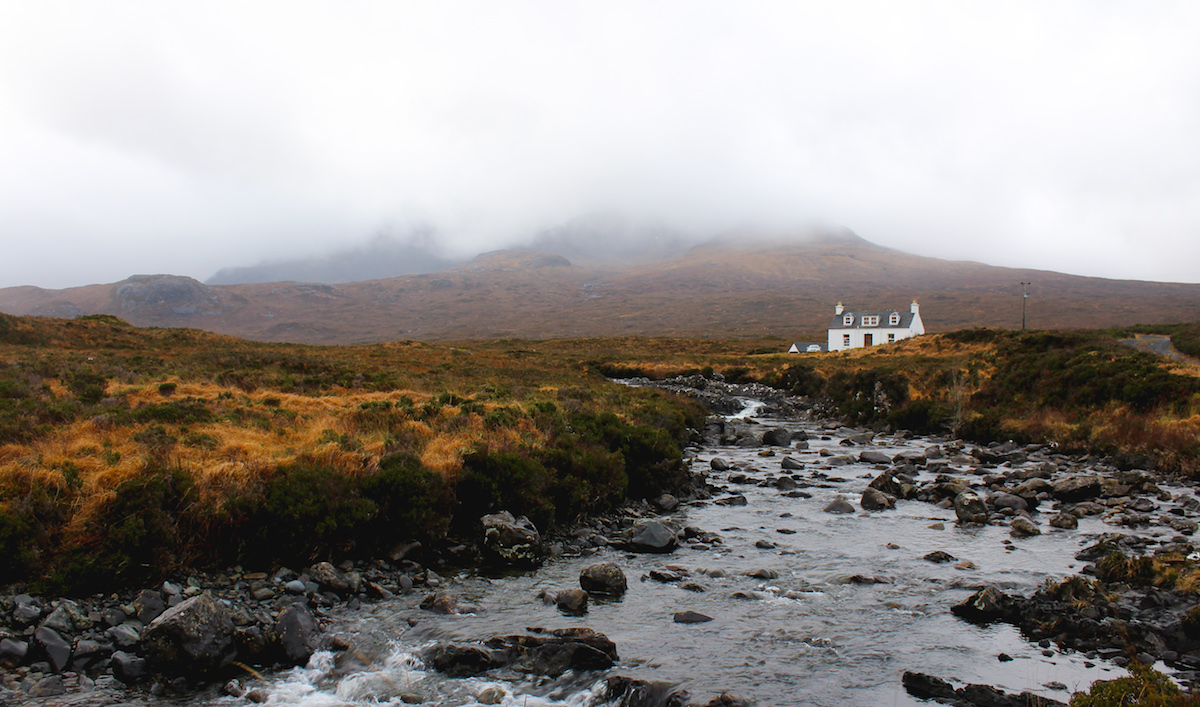On the northwest coast of Scotland, where a slice of earth floats atop the sea, the sun does not abide by the wishes of wandering travelers. Instead, she dips and dances. In the months of summer, she disappears beyond the horizon, but only briefly before reclaiming her place in the sky. Although science promises there is a pattern to her rhythm, the sun appears as untamed as the grazing sheep and untethered horses.
At 634-square miles, the Isle of Skye retains a shape as curious as the unruled sun. Peninsulas, inlets, and whitewashed bays form the more than 400-miles of jagged coastline. Thick bogs and rolling hills cover what’s in-between. Ruins are also a common sighting and point of interest for visitors. Ancient castles dressed in moss and flattened Brochs—circular stone structures dating back to the Scottish Iron Age—lay scattered around the desolate terrain.
Summer is the best time to visit: Hotels are booked, ferries shuttle passengers to the surrounding islands, wafts of battered fish and cask ale seep from bustling pubs and fill the streets of Portree, Skye’s main town. And the photo-famous pastel homes are visible: cotton-candy pink; sky blue; mint green. When the morning mist dissipates, cameras and their owners appear in droves. The warmer months welcome an overflow of tourists; unlike winter, the days seem eternal. Sun lingers above the Atlantic Ocean. Only for a few hours does she trade places with the stars.
For travelers who are audacious enough to visit the Isle of Skye during the off-season though, winter reveals a bleak and mysterious land. Whipping winds replace the sound of human chatter; dark swallows the grass and the sheep and the damp-stained homes. The sky becomes one with the sea. For locals, and the few brave visitors, only the pubs offer refuge from the coastal gales and rain.
It’s in such a Scottish pub, seated at the bar by the crackling fire, where a fortunate nomad might hear strange stories not fit for the tourist brochures. Rumors that date back to long before the First World War, when odd creatures dwelled in the surrounding hills. Tales of magic and witchcraft, of menacing fairies stealing babies and enchanting men with their dancing. Folklore of deceitful witches disguised as cats or casting spells upon the livestock. In her collection of stories about the island from 1922, folklore author Mary Julia MacCulloch writes of men claiming to have stumbled upon opened graves in the north of Skye. The tombs revealed the skeletons of giants. These are the stories one might be lucky enough to hear, passed down through generations and told in the depths of winter as rain pelts the pub windows—shared only over a few pints, of course.
Most travelers will not find abandoned fairy homes, or even a native to tell the tales though. Even still, the Isle of Skye will enchant with its topography. Despite winds that promise to tangle hair and burn cheeks, regardless of wild sun patterns and raging waves, it’s an island fit for wanderers. All that’s required are waterproof hiking boots and a sense of adventure.

